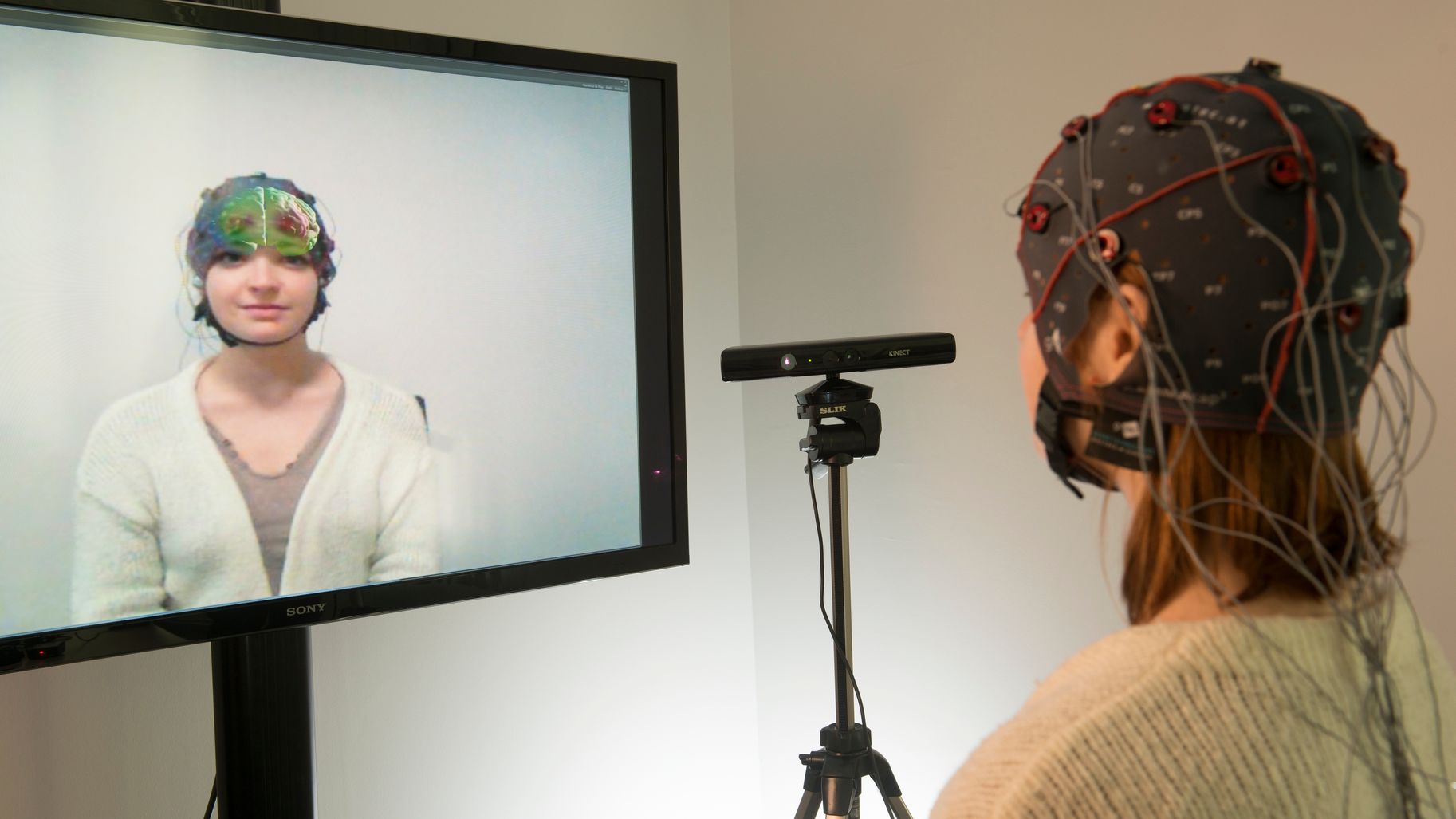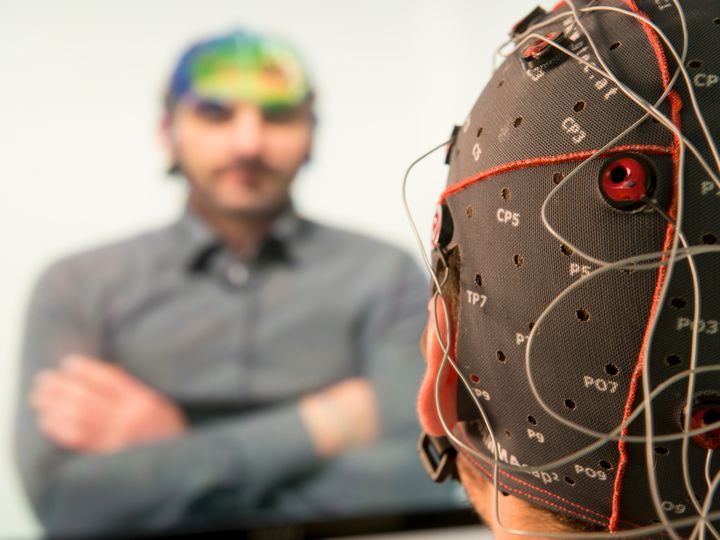
The Mind Mirror, the result of collaboration between IRISA (Institute for Research in Computer Science and Random Systems) and INSA in Rennes, is the first device to combine augmented reality and electroencephalography (EEG) in real time.
The Mind Mirror device
The Mind Mirror equipment consists of an EEG helmet , a 3D camera and a screen covered in a semi-reflective film which acts as a mirror .
The user is fitted with the EEG helmet using electrodes located on the surface of the skull, in order to collect and record the brain's electrical activity. The brain activity collected is reconstructed in real time and then projected onto a "virtual brain" displayed on the screen-mirror on the user's head.
The 3D camera makes it possible to monitor the position of the head, so that the virtual brain can be perfectly superimposed onto the user's brain, with a transparent effect. The augmented reality effect is striking, as users can use the mirror to see their brain in action in their own head!
Several graphic representations or analyses of the brain’s activity can be used:
- coloured mapping of the electrical activity on the surface of the brain (peaks of activity are shown in red, for example)
- a volume representation which reconstructs the activity inside the brain (with 3D pixels)
- classification of the brain's activity in real time, which allows users to see whether they are concentrating (in red) or relaxed (in blue)
What can the Mind Mirror be used for? Promising first results
Researchers have been able to test and compare the use of the Mind Mirror with more traditional devices for visualising brain activity during a task in which the subjects had to learn to control their concentration/relaxation brain activity. They observed that the device allowed subjects to learn to effectively monitor brain activity, whilst also offering more innovative and more original visualisation, which was particularly popular with participants.
There are many possible prospects for the development of the Mind Mirror. Inria researchers want to test new graphic representations of the brain, as well as new material configurations (new tracking tools, low-cost 3D camera, smartphones, etc.)
In the medium term, the researchers also want to test the many uses of the Mind Mirror. It has a large number of applications:
- leisure or recreational applications: it offers a unique new user experience!
- visualisation applications for science and education (greater understanding and comprehension of the operation or topography of the brain)
- medical applications for diagnosis or Neurofeedback.
Improving Neurofeedback
The possibilities for Neurofeedback are currently very promising and there are plans to use it for treating a range of pathologies, such as problems with attention, sleep, tinnitus and motor deficits as a result of strokes.
Neurofeedback considers the brain's electric activity as a series of muscles which we can train and develop as soon as we receive feedback, in a kind of learning loop.
The Mind Mirror offers two new possibilities, which result in improved Neurofeedback; firstly being able to see a representation of the whole brain in action, and secondly being able to see brain activity inside your own head. Researchers believe that the enhanced visual information provided by the Mind Mirror will allow patients to better control their brain activity as part of a Neurofeedback loop.
